The Antichrist and the Man of Lawlessness
The Antichrist and the Man of Lawlessness
 ⤒🔗
⤒🔗
Introduction←⤒🔗
When I was first presented with a list of possible topics from which to choose my speech title for today, I did not hesitate long in choosing the topic of the Antichrist. I chose this topic partly because there remains a good deal of confusion as to who the Antichrist is, and as to what his actual role and function is according to the Bible. But that was not my foremost reason. I also was directed to this choice because of the tremendous resurgence of interest in the macabre and the demonic, and because antichristian pressures in our world keep increasing. The youth sub-culture of our day shows an all too keen interest in what might be termed the "satanic" – the bizarre, the morbid and the grotesque. The complete "transvaluation of values" – to borrow a term from Nietzsche – has occurred among the leading cultural forces of our day. The confusion of the sacred with the profane, the confusion of morals and codes of conduct – all this has come to new and unparalleled dimensions today.
You may think that this has little to do with the topic at hand. For example, if we point to the increasing reversal of roles with respect to the place of men and women in our society, or to pop cult figures like Michael Jackson and Madonna, not many of us would directly think of the Antichrist. After all, cult heroes only form a fractional influence on society as a whole. And while a steady change in values and accepted or traditional roles may be termed negative with respect to the gospel, it cannot directly be connected with the appearance of the Antichrist.
However, Scripture itself clearly warns us that Satan appears as an angel of light, and that his power of deception is forceful and acute. That is why we also must be aware of the times we are living in as Reformed women, not only with respect to our own position and situation, but also with regard to our children, and the coming generations. We must be aware of the direction of history, and learn to know that person whom the Bible calls the Antichrist, that person who dominates the final years of this dispensation. Knowing both the signs of his coming and the nature of his person, we will be all the more equipped to meet the enemy in the gate, and be spiritually armed and dressed for battle in regard to the approaching day of evil. Our purpose then is to study the figure of the Antichrist, and the manifestation of his activities on earth. We will first look at some views of the Antichrist and the antichristian world, then consider some Bible passages, after which we will try to piece together the correct view of the Antichrist and his manifestation in the world. We will then consider the rise, onslaught and the fall of the Antichrist.
Views on the Antichrist←⤒🔗
Who is the Antichrist? Is he the same figure as the man of lawlessness of whom Paul speaks in his letter to the Thessalonians? Does the Antichrist represent a series of figures, or is he restricted to one person alone? These are some of the questions that often arise when one runs into the Scriptural teaching on the Antichrist. Admittedly, there are several difficult passages with regard to his appearance, and we will take some time to consider the passages individually before getting a global picture of the identity of the Antichrist.
Every age has had its views on the Antichrist.1 Many of the early church fathers held that the Antichrist would be a Jew, and that he would establish his throne in Palestine. On the basis of Jeremiah 8:16, Ireneaus held that he would descend from the tribe of Dan. Others pointed to the Roman rulers as antichristian figures. Chrysostomos, the bishop of Constantinople, held that Paul was referring to Nero when he wrote about the "mystery of lawlessness" and the "man of lawlessness" in 2 Thessalonians 2. Augustine, too, pointed to the Roman empire as the forthcoming kingdom of evil, and on the basis of Daniel 7:24 expected the empire to be divided into ten parts, after which the antichristian ruler would appear.
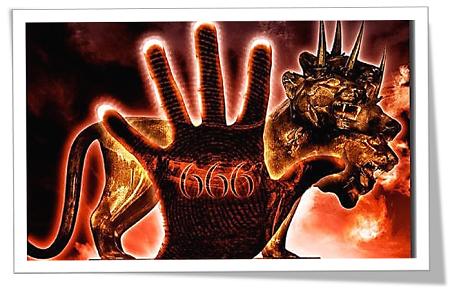
In the Middle Ages, views on the Antichrist became much more colourful and dramatic. The general spirit of darkness and superstition led to the development of many legends and sagas with regard to Satan, the devil, and the Antichrist. The Antichrist would be born out of an illicit relationship between a nun and a bishop, or, as others said, between a bishop and a public woman. The devil would specially influence his conception, filling him with many destructive powers. He would appear in Jerusalem, and claim himself to be the true Messiah. He would pretend to reintroduce the Mosaic form of worship, but in himself he would harbour the seven deadly sins.
The Antichrist then becomes a powerful king, and the devil gives him stores of secret treasures. All the kings of the world seek his favours. Lawlessness rules the world, but the faithful will be persecuted. So the preachers threatened congregations with his imminent appearance. He would be surrounded with a great company of witches, goblins, and beggars. In the mystery plays so typical of this period, he was often portrayed as standing alongside the devil himself, surrounded by eerie sounds, smoke, flying satyrs, and the flaming hole of hell with the huge dragon cave pictured nearby as the place where the devil rapidly ran with his prey after snatching them in the moment of carnal weakness.
This spirit of fantasy so typical of the Middle Ages came to a radical change with the dawn of the Reformation. So corrupt had the Roman see become, and so polluted with harlotry and vice, that Luther did not hesitate for a moment to label the pope and his cohorts as the Antichrist. It was an appellation that Luther never saw reason to retract his whole life long, and later it became anchored in the Smalcald Articles of 1537. For Luther, not one particular pope, but popery as a whole was the Antichrist. He also expected an imminent return of Christ, and hoped to be able to witness the defeat of the Antichrist in his lifetime.
Calvin's references to the papacy as the Antichrist are less frequent, and he is more concerned to show the error lodged in the entire Roman system, including its doctrine of merit and works, as well as its view of the sacrament and the offices. Yet, in distinction from Melanchton, he also unreservedly held the view that the pope was the Antichrist. However, in Calvin this label did not imply the imminent end of the world. Rather, the pope deserved the name Antichrist because of his open and violent hostility to the progress of the true gospel of Christ in the world. All heretics and sects through the ages were also considered as part of the kingdom of the Antichrist, and Calvin viewed the papacy as the vanguard and standard bearer of this kingdom. We indirectly support Calvin's view in the third of our doctrinal standards, the Canons of Dordt. The preface to this confession acknowledges how the churches of Holland "were delivered by God's almighty hand from the tyranny of the Roman antichrist and the terrible idolatry of popery."2
In more recent times, Reformed scholars and exegetes have made some significant distinctions with regard to the Antichrist. H. Bavinck distinguished between the antichristian power which is always present and has its own history, and the Antichrist as a unique end-time figure. Abraham Kuyper had a similar view. Many also distinguished between the Antichrist as an end-time figure and various forerunners of the Antichrist throughout history who would pave the way for his appearance at the end of time. This has been the standard view in Reformed circles for many years.
The Antichristian World←⤒🔗
Many people have painted pictures of the horrible totalitarian state which they suppose will one day take hold of the world and dominate all world events. Many authors – also outside the circle of faith – have been preoccupied with this theme. That only shows how much the fear of encroaching state power and the fear of large scale terror looms in the human mind. For example, George Orwell vented his fear of the growing power of the state in his book Nineteen Eighty-Four. All of life was controlled by the Party, and all individual freedoms were sacrificed for the state. One had to live in constant fear of Big Brother, who regulated human existence and controlled all human thought from birth to death. Science and the technocratic ideal ruled the world, preventing any room for individuality or individual expression. The German novelist Franz Kafka gives a similar point of view in his famous book The Trial (Das Proces).

A more recent example, which may be of interest to you as Canadian women is a new book by Canadian novelist Margaret Atwood entitled The Handmaid's Tale (Toronto, 1985). This book describes a world in which – remarkably – the televangelists and their followers come to absolute power. Life is totally restructured according to rigid Old Testament laws, and most women are relegated to the position of "handmaids." Handmaids are expected to serve as mechanical child-bearers for the "Commanders," producing children for the new Christian society.
Just as Rachel gave her maid Bilhah to Jacob, so the Commanders' wives give handmaidens to their husbands. Women who fail to comply with the new laws are ''salvaged' i.e., ruthlessly "tarred and feathered" and killed in public squares – all in accordance with Old Testament laws. What awakens our interest in this last publication is that this view of the totalitarian state is not so much determined by prophecy as it is determined by a hatred of Biblical prophecy. In Atwood's view, the Christian heritage is obviously to blame for the longstanding tradition of the role of servitude which women are supposed to endure. So the evil totalitarian world is for her one in which the televangelists rule the day. And while we do not want to minimize the danger of the false prophecy inherent in so much of today's television preaching, we ought to be clear about Atwood's essential motivations. Unfortunately, her work shows an outright hatred for prophecy, and this only prevents her from getting any kind of true assessment of what the real world of evil and the Antichrist will be like.
That the end-time world will be a totalitarian state is one point where we can agree with writers mentioned above. But their view of the extent of the terror and oppression that will reign is much too limited. For the terror that will be exerted is at bottom conditioned by the antithesis, i.e., the spiritual battle between the seed of the woman and the seed of the serpent. This battle will come to its final apex at the end of days. This will be a time of suffering, persecution, and tribulation for the church. Let us now turn to some Scripture passages to see what contours this end-time struggle will take.
The Old Testament Antichrist←⤒🔗
Ezekiel 38, 39←↰⤒🔗
Although there are many allusions to the coming power of evil in the Old Testament, the chapters 38 and 39 of Ezekiel give the first direct indications of the arrival of the power of lawlessness. In these chapters the horrible antichristian power takes the name of Gog, who comes from the land of Magog. Gog is described as powerful ruler who becomes the general of a great horde of nations, all of whom descend upon Israel in order to destroy the people of God from the earth and plunder all her riches. As he descends upon God's people, quiet and unsuspecting, Gog is defeated and killed by the terrible wrath of the LORD. He undertakes to cleanse the land by burying the slain hordes, and then a mighty sacrificial feast is held in which the triumphant victory cry rings out over all the princes of the earth.
With most Reformed exegetes we can call Gog the antichristian figure of the end-time as he is represented in Old Testament terms. In the prophecies of Ezekiel this figure is clearly represented as head of the remote or far-away nations – nations that were alien to the law and covenants, and far removed from the centre of world culture.3 Even at the dawn of the New Testament, when the gospel was proclaimed to all the known world, these nations existed. In Revelation 20:8 this prophecy is expanded to include all the nations of the earth, and Satan is described as being loosed in order to deceive all nations from the four corners of the earth. This gives further ground for identifying Gog and Magog with the end-time antimessianic world power.

Daniel 7←↰⤒🔗
Daniel 7 forms another integral Old Testament text towards arriving at a picture of the Antichrist. In the vision described here, Daniel sees four beasts come out of the sea: a lion with eagles' wings, a bear, a leopard, and a fourth beast which is unnamed but described as "terrible, dreadful and exceedingly strong," Daniel 7:7. This beast had ten horns, and from this beast the little horn springs forth, having eyes like the eyes of a man, and a mouth speaking blasphemous things. But before the rise of this little horn, Daniel sees a new and powerful vision, the enthronement of the Son of Man in heaven. Dominion and glory and kingdom are given to him so that all peoples will serve Him, and His kingdom is to be an everlasting kingdom. In the light of His enthronement, Daniel learns what the rule of the fourth beast will bring, as well as the "little horn" which speaks such blasphemous things against the LORD.
As we noted, since ancient times this fourth kingdom has been identified with the Roman empire, and as I see it this remains the most probable view.4 The first beast represents the Babylonian empire, the second represents the Medo-Persian empire; the third represents the Graeco-Macedonian empire. Who then is the "little horn"? Some identify him with Antiochus Epiphanes, the Seleucid ruler who so ruthlessly sacked Jerusalem in 169 - 168 B.C. But because the focal point is on the Roman empire, I think we have a different figure here. This is not the same "little horn" described in Daniel 8:9, or in 11:21ff. In those chapters the little horn is indeed Antiochus Epiphanes, and there his exploits and attacks on the Jews are extensively described. But in chapter 7 we have a more global picture of the work of a similar figure. Thus, Antiochus Epiphanes is a type of a gruesome end-time figure who ruthlessly attacks the saints of God. In Daniel 7 the focus is on the evil emperors like Caesar, Caligula, Vespasian and others who so severely taxed the church in the days before and surrounding the coming of Christ.5
Daniel 11:31ff. 12:11ff←↰⤒🔗
In the later visions of Daniel, as we said, the exploits of Antiochus Epiphanes are described in minute detail. In 169 B.C. Antiochus in mad revenge and anger against the Jews also instituted offerings and sacrifices to Zeus in the heart of Jerusalem, in the inner court of the temple area. Bacchic and other pagan rites were practiced. This is the "abomination that makes desolate" which the angel spoke of to Daniel, cf. vs. 31.
In chapter 12 the terror of the reign of the Antichrist is described in terms of a period of 1290 days, which is parallel to the 42 months referred to in Revelation 13:5. Some allusions are given to the death of the Antichrist when it says that those who wait and come to the 1335 days will be blessed. A time of continued patience and endurance is required for God's people after the elimination of the evil prince, a period of 45 days.
In this passage the Antichrist is described as a man first of all. Yet he will declare himself a god, and exalt himself against every god. The only god he will worship is the god of the fortresses, i.e., Zeus, and the gods of the Olympiad.
The New Testament Antichrist←⤒🔗
Matthew 24←↰⤒🔗
In His discourses concerning the end of the times, the Lord Jesus also quotes the prophet Daniel, referring specifically to the "abomination of desolation" foretold by the prophet, vs. 15. The Lord Jesus speaks first of the arrival of many false Christs and false prophets. In the wake of their activities, the desolating sacrilege will appear. Signs and wonders will accompany them, and lead many astray. The arrival of the desolating sacrilege is the beginning of the great tribulation, the days in which the saints will be attacked and forced to flee. But these days will be shortened for the sake of the elect, and the sign of the Son of man will appear. The angels will come with a loud trumpet call, and the elect will be gathered from the four winds.
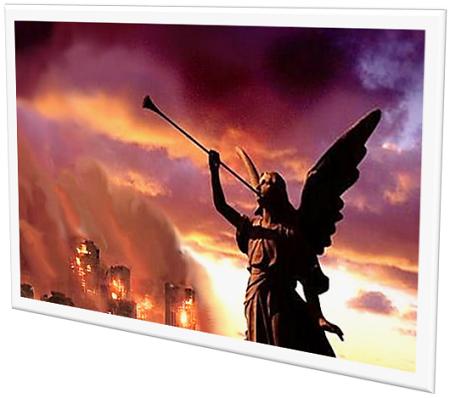
Two thematic moments are clearly interwoven in these words of our Saviour. His attention is firstly directly to the situation of the believers He addressed and their families. He prophesies the imminent destruction of Jerusalem, and the great terror that will come over the church in the wake of this destruction. And indeed, the great persecutions began shortly after the ascension of Christ and the mission of the gospel to the Gentiles. But the Saviour's words also point to the end of the age and to His final coming in glory. In fact, in His words these two thematic moments are pressed into one. Yet what He speaks of as happening in one moment stretches out over the whole history of the world, and applies to several periods in history, and particularly to the end of the ages. Christ gives the basic details, and then the perspectives are widened and deepened' as the history of the church proceeds.
2 Thessalonians 2←↰⤒🔗
In his second letter to the Thessalonians Paul gives the troubled believers assurance with regard to the end of the age. False rumours and prophecies had led the church there to become "shaken in mind and excited," and several supposed that the return of Christ was imminent. The church is exhorted to patience endurance, and to continual service of thanksgiving until the day Christ appears. The central point in this letter is that the day of the Lord will not come until the rebellion comes and the man of lawlessness is revealed. Much in the same way that Antiochus Epiphanes and the great struggle of the believers had to take place before Christ could come, so also in the new dispensation the man of lawlessness must appear and dominate world history before the Son appears again in glory. Paul's description clearly draws on Daniel's prophecy here.6 The lawless one takes his seat in the temple of God and proclaims himself to be God. The new element that Paul adds is that the forces which now restrain the appearance of the lawless one will at a certain time be removed, and all restraint of the Antichrist will be taken away.
Who and what are these forces of restraint? Many explanations have been given for this hidden figure. Some point to the Lord Jesus, others to an angel of the Lord, still others to the Roman empire, or to the church and the gospel. I prefer to take this figure as the glory of Christ as it is revealed on earth in this dispensation. This would include the ministry of angels, the authorities, and points above all to the means of grace established in the church and the ministry of the gospel.7 But I grant that there are various possibilities here, and the exact identity of the figure is not made known to us. The real point is that we focus on the identity of the one who then receives full reign to do his work, viz., the Antichrist. He will come to his full appearance. However, no sooner does he arrive on the stage of world history to assume full control than we see the return of the Lord Jesus, who slays the lawless one by the breath of his mouth, and destroys him by His appearing and His coming. Again one can notice that some of the themes of the close of the book of Daniel are taken up here. The lawless one will be put to death before the final day arrives, and it appears that the defeat of the lawless one is Christ's first work at His return.8 Only after the defeat of this figure does He proceed to gather the elect from the four corners of the earth, call forth the dead, and announce the final judgment.
1 John 2:18ff.; 4:3←↰⤒🔗
The apostle John is the only apostle who refers directly to the Antichrist, and he also gives a number of clues as to his character and appearance. He uses the word Antichrist in both the singular and plural, indicating that the figure can be more than one person. He also says that "they went out from us" indicating that the antichristian forces have their origin in the church of God. The Antichrist in John brings a false message and practices a false religion. Specifically the Antichrist is marked by the denial that Jesus is the Christ, and that the Son of God has come into the world to assume our flesh and blood. In denying this central truth of the faith, the Antichrist is typified as a liar, and the believers are warned and exhorted to discern this evil spirit and to flee from it.
Revelation 11, 13, 16, 17 and 20←↰⤒🔗
In the last book of the Bible, deeper and more compelling pictures are given to us of the end-time struggle of the church. In Revelation 13 the four beasts of the prophecy of Daniel return, but they are here all combined in one terrible and powerful figure. He is the beast from the sea, and alongside him appears the beast from the earth, whom Dr. Greijdanus identifies as the false prophet.9 The visions of John thus clearly distinguish between the false prophets, and the beast of the sea and the bottomless pit. The one prepares the way for the other.
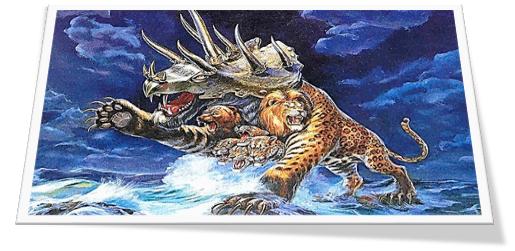
Who does the beast from the sea represent?
According to Prof. Greijdanus, this beast represents "the collective governments of all mankind, all nations and kingdoms considered as political entities, the rules or rulers with their nations, of all times, taken as a unity … The Roman empire is the embodiment of this beast in only one of his forms or heads, while the beast out of the abyss, or the eight king, 17:8, 11, the Antichrist, with his world power, will be the eighth, full and last embodiment of his being, in unison with the ten kings who then work together with him, and submit themselves to him, 17:16-17."10
Greijdanus thus sees the beast from the bottomless pit as a special embodiment (belichaaming) of the beast of the sea, and it is this beast, the beast from the abyss, that forms the Antichrist proper. He slays the two witnesses in the streets of the holy city, cf. Revelation 11:7, and he makes war on the saints of God.
We can then draw up the following sketch: the beast out of the sea is the embodiment (or incarnation) of the dragon, and the beast out of the abyss is a special embodiment of the beast out of the sea. The beast from the earth, on the other hand, is a co-worker with the beast out of the sea, and as its mouthpiece stands and works in the closest cooperation with it. One might say that the Antichrist proper is revealed in the beast coming out of the abyss. This is the manifestation of the beast of the sea in its most concentrated form. This will be a universal power in which all restraint is taken away. His number will be 666 – the number of man coming to the apex of his strength – and he will introduce the universal boycott, in which only those who have the name of the beast or the mark of its name on their foreheads will be permitted to participate in economic and cultural life.
Two important factors concerning the beast from the sea are also revealed in Revelation 13:
-
First of all he will be able to perform many remarkable signs and wonders.
-
Secondly, he will receive a mortal wound, from which he will recover.
On recovering from this wound, the whole world will follow after the beast. Commentators have long interpreted this latter event as an imitation of the events in the life of Christ.11 Just as Jesus Christ is the incarnation of God in the world, the beast from the sea represents the incarnation of the devil on earth. Just as Christ dies on the cross and rises again, so the beast receives a mortal wound and experiences a mock resurrection. Great powers are given to him. He even has a third of the stars at his disposal.
The Form of the Antichrist←⤒🔗
From all of these Scripture references we are now in a position to develop a unified picture of the Scriptural view of the Antichrist. The texts present a varied picture, but a certain pattern does emerge, and it is this pattern which we wish to isolate. Essentially the New Testament picture of the Antichrist is much more detailed and complex than that given in the Old Testament.
The Old Testament prophecies focus primarily on a political apocalyptic figure, a world ruler who will severely persecute the people of God, Daniel identifies this figure as Antiochus Epiphanes, but also sees this figure as a type of the antichristian power which will manifest itself in greatness just before the appearance of the Son of Man and the institution of His reign in heaven. And just as Daniel describes in great detail the visible appearance of a certain person in the end-time age, so we may expect the visible appearance of a similar figure before the final return of the Lord Jesus in glory.
One may wonder whether it is actually correct to speak of the Antichrist of the Old Testament. Christ had not yet appeared! Is it then correct to refer to opposing powers as the Antichrist? I think the expression may be retained if we keep the antithesis inherent in the mother-promise (Genesis 3:15) in mind. If we consider that the struggle which both Ezekiel and Daniel describe is essentially the same battle between the seed of the woman and the seed of the serpent, then we can also understand the expression "Antichrist of the Old Testament."
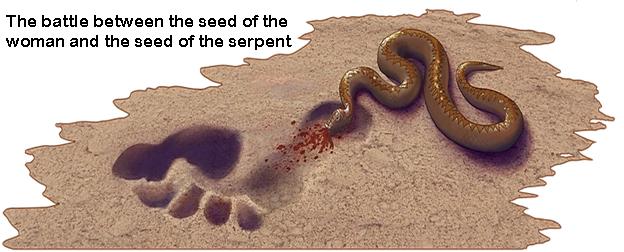
On the other hand, Bavinck is correct in stating that the real manifestation of the Antichrist only takes place in the new dispensation. While the essential spirit is present in the Old Testament, the embodiment and growth of the Antichrist as an end-time figure belongs characteristically to the New Testament. As Bavinck says, "it is the appearance of Christ which awakens the antichristian principle."12
In this light, the New Testament figure of the Antichrist understandably shows a different form from that of the Old. Both the apostles Paul and John speak more of an ecclesiastical and religiously-qualified end-time opponent of the Lord Jesus. And in Revelation, the ecclesiastical and the political figure appear to be woven together in the coming of the two beasts, one from the sea, the other from the earth, as well as in the appearance of the great harlot. Like the dragon, the beast on which the harlot sits also has seven heads and ten horns, Revelation 17:3.
The New Testament passages make clear that the Antichrist represents a collective idea, and a collective power. John speaks of many Antichrists who have already gone out in the world. These are all known by the same trait: the denial of the Word come in the flesh. This does not imply that the Antichrist is strictly speaking only an "office" or a particular "spirit." The texts stress that the Antichrist takes the form of a man, i.e., he becomes a particular person. With G.C. Berkouwer, therefore, we reject the opposition between the Antichrist as power and as person, since both are reflected in this figure.13
We also agree with Berkouwer and Prof. Doekes in rejecting Hepp's idea of various dictators and rulers as forerunners of the Antichrist.14 The central point in 1 John is that the church lives in the fast hour. The time is short, the ages have been pressed together (cf. 1 Corinthians 7). The danger of the idea of a "forerunner" is that we can sit back and assure ourselves that we need not be too careful, since we at present only meet forerunners of the Antichrist, and that the real Antichrist has not yet appeared. Nothing could be further from the truth! John wants all attention directed to the fact that the Antichrist has already appeared and has begun his work in the world. The Lord wants the readers to recognize the coming and appearance of the evil one right now. As Prof. Doekes says, the chief feature of the New Testament Antichrist according to John is that he is the "defender and propagator of an anti-Scriptural teaching."15 Therefore he must always be discerned in the world.
This leads us to stress the idea of the collective embodiment of the antichristian idea, as Dr. Greijdanus introduced it in his commentary on Revelation. In fact what we see throughout history is the steady embodiment or incorporation of the one person of the Antichrist. Throughout history we see the spirit of apostasy and rebellion taking human form. And the prophecy of Scripture tells us that this process will come to a head with the concentration of antichristian world power in one man. But the movement and preparation towards this goal has already been active since Pentecost.
With the commentators of the Statenvertaling, we can also say that the expression "man of lawlessness" refers to none other than the man who fully gives himself over to sin. He is the spiritual incarnation of the sin against the Holy Spirit. He is the incarnation of Satan, the dragon in human form. He is fully human, and yet by his wonders is like an angel, almost superhuman. And the many figures like this who have already passed the stage of world history are not forerunners, but actual partial manifestations of the future man of sin. The only point of difference is that in all previous and contemporary antichristian figures, the wall of restraint has not yet been removed. Just like the Roman emperors, Napoleon and Hitler encountered natural and political limitations to their struggle for universal power. But one day the earth will help the dragon, and the world will no longer possess an Allied front against the evil horde. One day Satan will be loosed, Revelation 20:8, all restraint will fall away, and the LORD will permit evil to become incarnated in its full-blown human form, and in its full evil character. The temptor of the beginning will almost be able to achieve his goal of seducing the entire human race. That was his object when he first approached Adam, and his punishment is that he is also held to the fanatic pursuit of his goal to the end of time. Whereas first he willed to do only evil with mankind, after his punishment he can do only evil with mankind. He wills and cannot but will evil continually. So he will also grasp for the whole of mankind in his incarnation as the man of sin.

The Rise of the Antichrist←⤒🔗
Scripture speaks of the Antichrist appearing for "a time, times and half a time," Daniel 7:25. (This period represents the time of the persecution of the church, the forty-two months of Revelation 13:5.) The first period tells us about his rise, and includes the entire history of the church, up to the day that Satan is loosed. In this period, the spirit of apostasy grows and comes to a head. It culminates in the arrival of the cosmic, and universal world power, the Antichrist in full bloom.
The second period points to the intense period of persecution that the church will endure. After his rise to power, the Antichrist takes his seat in the temple of God, and claims himself to be God. He will introduce a new religious order, and attack the church with unprecedented fury. Days of darkness and tribulation will follow for the church, and the two witnesses will lie slain in the street, Revelation 11:7, 8. But the beast from the abyss will only attain a Pyrrhic victory. He will pretend that he has the victory, and will exalt himself as the one who recovered from the mortal wound. But his claims will be illusory and his schemes will be exposed as being counterfeit.
With respect to the place of women in the new order, we know from Daniel 11:37 that the man of lawlessness will also be one who despises the love of women. Women may claim to have emancipated themselves from the authority of men, but their claims will be short-lived. The Lord Jesus was aware of how terrifying the rule of the lawless one would be for women when He said, "But alas for those who are with child and for those who give suck in those days!" (Matthew 24:19). The evil one will show no mercy to the helpless or the unborn.
The Fall of the Antichrist←⤒🔗
We must also consider the third period, the end of the Antichrist, since in all texts from Ezekiel to Revelation his doom is foretold. Years ago Prof. V. Hepp argued that, being a human fully given over to sin, the Antichrist would be required to undergo death in its fullness, that is, both temporal and eternal death. He argued this view on the basis of Daniel 12:11, 12 which according to him referred to the death of the Antichrist in time, and of his coming to life again. Daniel speaks of a lengthening of days after the first death of the Antichrist. The one who perseveres will then outlive the Antichrist.16
In one of his early articles in a theological journal K. Schilder criticized Hepp's view, and argued that Scripture leans strongly towards the view of an immediate full-scale judgment of the man of sin in this life. In other words, upon His return, the Lord Jesus will snatch the man of sin by his neck and visibly throw him bodily and physically into the bottomless pit.
Schilder argued his case by initially showing that Dr. Hepp had incorrectly used Daniel 12 to bolster his argument of a temporal dying and rising of the Antichrist. Daniel nowhere intimates that the Anti-Christian figure will come to life again. He does say that the believers will outlive the lawless one. But according to Schilder, if one assumes with Hepp that this text suggests a death and reappearance of the Antichrist for judgment in this life, then he must also conclude that the unbelievers and the followers of the beast will outlive him as well – a conclusion which the invocation of blessing in Daniel 12:12 does not support.17
Schilder then turned to the other passages dealing with the return of Christ. He argued that for believers as well as unbelievers the initial coming to life again at the moment of Christ's return is not part of the blessing or curse of the gospel, but belongs to the paradise world order that the Lord had instituted already before the fall. A reappearance in the flesh is itself not a blessing or curse, and not grace or wrath. Unbelievers, too, will rise at the last day and will receive their bodies again in order to be judged according to what they have done in the body, whether good or bad.
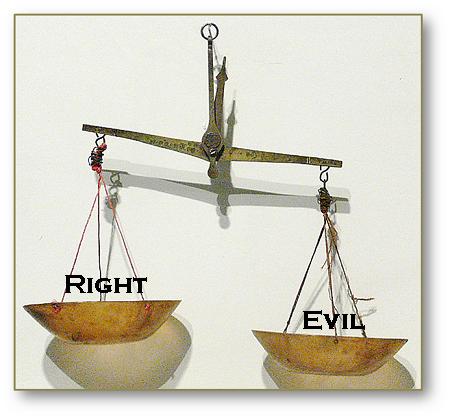
But by the very nature of the case, the Antichrist suffers a different fate. He is the incarnation of Satan himself, man fully given over to sin. According to Schilder, an unbiased reading of Revelation 19:19, 20, as well as 2 Thessalonians 2 tells us clearly that the punishment reserved for this figure is not only of a different degree, but also of another order. Paul says that suddenly the Lord Jesus will appear and will slay the evil one with the breath of his mouth and destroy him with His coming. Revelation 19 and 20, too, speak of the beast being captured and immediately cast into the bottomless pit. His judgment takes place before the final judgment! His judgment will be the public manifestation to all flesh of the victory of the Son, and it will lead all others to tremble in fear.18
An important feature of this judgment is the justice of God manifested in it. As the incarnation of Satan, the man of sin exalts himself above angels and above God himself. But he remains man! Yet he is also judged and condemned by a Man! Each to His own, each according to the rule of the ancient covenant – such is the rule of God's covenant justice! Thus, the final act of the removal of the man of sin is not a violent triumph over Satan by Christ, but the fair and equitable judgment of Man against man and of Angel against angel at the last hour of world history. Hence this act represents the triumph of justice over injustice, and of right over evil.
Summary←⤒🔗
In the description of the Antichrist given here, we have attempted to piece together the combined testimony of Scripture with regard to the man of sin. Here the central discovery has been that the process of the coming of the Antichrist is the process of the embodiment or incarnation of the power of evil in the flesh. Sin takes on its most terrible form in the figure of a human person. And all the movement and the general spiritual direction of the world today is directed to this end.
How true are the words of the Lord Jesus! Where is the Antichrist? False christs and false prophets are everywhere, and they are even divided among themselves. The televangelists violently oppose Gorbachev, but in the end they might just be working to the same goal! Pop artists from East and West sing and play for peace, but both foster the arrival of the age of lawlessness. The cultural heroes, the filmmakers, the artists and writers, the political and religious leaders, the pope and the World Council of Churches – all these movements, both in their internal differences and in their underlying unities move the whole world to the day of the manifestation of the evil one, the beast from the abyss, the Antichrist.

We then cannot say directly that Pope John Paul II is the Antichrist, or that Michael Jackson is the Antichrist (to mention some examples). Yet the spirit the pope represents and the spirit which exudes from him is the spirit of the Antichrist, and thus the Reformers were not far off in taking the Papacy as the centre of the Antichrist. Orthodox Roman Catholics consider him to be a new Jeremiah who brings the Word of God to a disbelieving and unrepentant people, a people hardening in sin. But anyone schooled in Luther and Calvin will recognize in the Pope the false prophet, who with platitudes and stereotype phrases preaches in such a way that many are wrong and many are right, too. He defends traditional morality, but also espouses liberation theology. And he also knows how to soften a hard line for the sake of the peace and unity of his internally divided organization.
But those who are spiritually tuned to the age will recognize the coming of the Antichrist in all areas of culture today. Immorality, labour unrest, recurring coups, the appearance of such figures as a Khomeini and a Khadafy – these are signs of the approaching man of lawlessness. These are more than forerunners – the voice of the Lawless One crackles loud and clear in all their addresses. It rings forth from the soldiers in Iran and Iraq, and the cry of hatred goes over the whole world.
Hence the word of the Lord Jesus applies to the church in ever greater measure today: "Watch and pray that you come not into temptation." For only those who equip themselves in the power of the Spirit will be able to withstand the evil day.
References (Dutch)
- Bavinck, H. Gereformeerde Dogmatiek, Vol. IV, (Kampen 1930), pp. 657ff.
- Berkouwer, G.C. De wederkomst van Christus, Vol. II, (Kampen, 1963), Chapter 11. (Also in English)
- Bremmer, R.H. Visioenen op Patmos, (Groningen, 1959).
- Doekes, L. "De komst van de Antichrist" and "De openbaring van de wetteloze" De Reformatie, Vol. 57, (1981-82), pp. 42-44; 89-91.
- De Wolff, I. De laatste jaren dezer wereld, (Goes, 1960).
- Hepp. V. De antichrist, (Kampen 1921).
References (English)
- Berkhof, L. Systematic Theology, (Grand Rapids, 1941), pp. 701 ff.
- Guy, H.A. The New Testament Doctrine of the "Last Things", (Toronto, 1948).
- Hodge, C. Systematic Theology, Vol. Ill, (Grand Rapids, 1977), Part IV, Ch. 3, pp. 812ff.
- Ling, T. The Significance of Satan, (London,1961).
Secondary sources
- Adams, J. The Time is at Hand, Philadelphia,1969.
- Cox, W. Biblical Studies in the Final Things.
- Hendriksen, W. The Bible and the Life Hereafter – More than Conquerors, Grand Rapids.

Add new comment